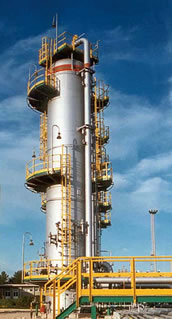Volatile Organic Compounds
What Wednesday’s Vote Means for Dallas, the Shale, and the Rest of the Universe
 Wednesday's vote on the Trinity East permits was not only an historic one. It's a long overdue turning point.
Wednesday's vote on the Trinity East permits was not only an historic one. It's a long overdue turning point.
The bloody knuckle political fight over urban gas drilling in Dallas in 2013 is the fight local environmentalists owed Fort Worth in 2006. Our collective failure in Cowtown gave the gas industry a too-friendly template for every other DFW city that's come after Fort Worth's gas rush.
Wednesday that template got tossed. A clearly frustrated Trinity East lobbyist complained that the company wouldn't even have had to participate in a Council hearing like this one if the same permits were being sought in Fort Worth. Welcome to Big D.
We can't undo old wrongs, but we can start changing the pattern of behavior that keeps churning out new ones. Wednesday's vote by the Dallas City Council was, by far, the highest-profile rebuke of the gas industry in a region it thinks its owns lock, stock and barrel. As he Dallas Morning News put it, "the defeat could be the death knell for natural gas drilling in a city known around the world for its ties to the petroleum industry." Politically, we aren't in Fort Worth anymore.
So what else is new after yesterday? From micro to macro:
From just a basic civics perspective, it's hard not to be impressed with the job that residents did in mobilizing themselves into a persistent and contentious force for change. This wasn't just an environmental victory. It was a victory for grassroots organizing. Residents had to fight not only the gas industry, but Dallas City Hall staff and the Mayor, who were all doing their best to rig the process in Trinity East's favor. Moreover, they had to fight on multiple fronts at the same time, both within the regulatory process to deny the permits outright, and in the Spring's city council elections to make sure they had the votes once the permits got to the horseshoe on Marilla. And oh yeah, they've had to put together and lobby for the toughest regulations to be included in a new ordinance being written, also at the same time.
That said, the last nine months have seen the biggest show of green political muscle in the city's history. If you total up the numbers of people involved, throw in a scandalous secret memo that brings down a City Manager, add triumphs in half the council elections you enter, and pile on winning-over the local conservative daily newspaper, then there's just no comparison. The momentum carried into Wednesday's meeting when opponents got two more votes than the four that were needed to block the permits, for a total of six. That's a far cry from the two or three everyone was sure about when this started last winter. We've seen the Dallas environmental movement grow up right before our eyes into something nobody, including environmentalists, thought it was capable of being when this started.
The fruit of this new growth was on display at City Hall (Coverge from the DMN, KERA, CultureMap and the Observer). There's no precedent for the kind of coalition that turned-out, except maybe the anti-Trinity Tollroad coalition that almost upended the Citizens Council's plans for solar-powered water taxis and riverside freeways in the 1990's. There were West Dallas residents from La Bajada, Oak Cliff dwellers, North and East Dallas homeowners association presidents, Students, teachers, professionals, gas lease owners, environmentalists, neighborhood activists, an Irving city council member, young mothers, young grandmothers and everything in between. Reflecting this diversity was a Council coalition that included both Hispanic Council members, Adam Medrano and Monica Alonzo, African-American Carolyn Davis, newcomer Philip Kingston, and stalwarts Sandy Greyson and Scott Griggs. If this alliance of interests holds together, it stands a very good chance of getting a strong new ordinance in the coming months.
And what about that new ordinance? With the old business of Trinity East now concluded, all attention is directed at Dallas writing and passing the most protective gas drilling ordinance in the Barnett Shale by the end of the year. The chances of that happening went up dramatically with Wednesday's vote.
One of the most unexpected results coming out of the confrontation was Mayor Rawlings' seemingly blunt declaration that he was four-square against urban drilling in Dallas. Saying the city could afford to be picky about the kind of development it seeks, he stated he didn't think gas drilling was a good match for Dallas and looked forward to passing a strong new ordinance. We'll see. Actions speak louder than words, and so far the Mayor's actions on this issue have all been in service to approving the Trinity East permits. With that fight resolved, can he be trusted to embrace a new philosophy? We'll be able to tell soon enough with a draft ordinance due to be delivered by the Plan Commission to the Council in late September. At any rate, his public confession on Wednesday is another sign of how far the Dallas movement has come. It's impossible to imagine Fort Worth Mayor Betsy Price uttering the same words.
It also gives the new members of the City Council some cover to vote for tougher regulations as well. Rumor has it that Jennifer Staubach-Gates was agonizing over the Trinity East vote even as she entered the Council Chambers. She eventually voted with the Mayor but as an ex- school nurse who's dealt with asthmatic kids firsthand, she's concerned about air pollution and other public health consequences of fracking. The Mayor's coming out against drilling in Dallas may embolden her and others to get on the band wagon. Rawlings' statement also sets a high bar for the slew of Mayoral candidates coming up in the next election cycle.
Residents now must focus on the last two Plan Commission meetings and hearings that are deciding what kind of new gas drilling ordinance Dallas will write. And they represent very full plates of issues indeed:
On Thursday, September 12th, at 8:30 am the Commission will begin work on the topics of "Air Quality," "Water," "Pipelines" and "Compressor Stations" in their morning workshop. At 1:30 pm that same day they'll get around to holding another one of their unique (anti-public) public hearings at City Hall on those same subjects. It's vital that residents remain plugged into this process and show up to speak on these incredibly important issues.
Just as opponents all got behind the idea of 1,500 foot setbacks and made it a mantra, we no need to coalesce around three or four central and simple concepts for the 12th including: 1) Air Pollution Off-sets, 2) Special Zoning Districts for Compressors, and 3) much higher water rates for taking water permanently out of the hydrological cycle.
– Off-sets would require that gas operators estimate how much new greenhouse gas (GHG) pollution they'll emit into the air every year based on EPA numbers and their own self-reporting, and then off-set those increases in air pollution by paying for pre-approved air pollution control projects in Dallas that would reduce pollution. If you expect to release 5 tons of emissions from your gas operations, you will have to pay for reducing five tons of air pollution in the city by electrifying a car fleet, improving energy efficiency measures in homes and buildings, putting more bikes on the street and so forth. In this way, off-sets also act as a strong incentive to decrease emissions as much as possible at the sources themselves. The less you pollute i nthe first place, the less you have to pay to off-set that pollution.
Unlike every other heavy industry that does business in a smog "non-attainment" area such as DFW, the gas industry is exempt from having to do this at the federal level. So we want Dallas to be the first city in the nation to fix that loophole by requiring local off-sets. This would be a precedent-setting piece of policy-making that citizens could then take to other Barnett Shale cities and counties. A grassroots regional policy could grow out of the Dallas template – much like it did when Dallas passed the first "green cement" procurement policy in 2007. That campaign lead to the eventual closing of all seven old wet kilns in Midlothian and millions of pounds of air pollution permanently eliminated. It forced the cement industry to clean up. We want to do the same thing with the gas industry and offsets.
This new policy could be the beginning of a tool that we can use to significantly reduce gas industry air pollution, not only in DFW, but in smoggy metro areas throughout the U.S. that now also host gas drilling, like Denver, Pittsburgh, and Los Angeles.
– Compressor Stations are the big league polluters of the natural gas fuel cycle, running 24/7 365 days a year and emitting voluminous amounts of air pollution. Some compressor stations release more Volatile Organic Compounds than the Midlothian cement plants and they're huge greenhouse gas polluters. A recent study from the Houston Advanced Research Center found that a single flare or compressor could raise downwind smog levels by 3-5 parts per billion or more within five miles. Compressors should be required to get their own Special Zoning District with strict rules on sound, pollution and setbacks.
– Water is precious in NorthTexas and industries that take it permanently out of the hydrological cycle should pay more than those that don't. A lot more, because it means we have to go out and find that water anew. Likewise, during drought conditions, water should be for drinking, not fracking. It's critical we make the industry pay for the real costs of using so much of this absolutely necessary resource and then throwing it away for good down a hole.
On Thursday September 26th the Plan Commission will hold its final public hearing on the new gas ordinance. Then it will vote on a draft to send the City Council. Again, citizens need a good turnout for sending this document off, whether it has everything in it we want, or it's lacking in some important way. We need to be there.
We are only these two September hearings away from showing up at the Dallas City Council with the most protective gas drilling ordinance in the Barnett Shale and providing the region and the country a new alternative for the obsolete Fort Worth model.
If you came down to City Hall, if you e-mailed, or phoned or wrote – Thank you for your contribution to the fight. It took exactly the amount of effort you and everyone else gave to make Wednesday's victory happen. It will take it again to pass a great ordinance.
But stick with us. We're making history.
Send an E-mail to Dallas Plan Commission Today, Turn Out for Setback Showdown Tomorrow
 Thursday's showdown at the Dallas Plan Commission over a 1500-foot setback between gas wells and "protected uses" like homes and schools is picking up steam.
Thursday's showdown at the Dallas Plan Commission over a 1500-foot setback between gas wells and "protected uses" like homes and schools is picking up steam.
After Commission members get lobbied during their morning session by City Attorney Tammy Palomino to "reconsider" their previous support of the extended buffer zone, local municipal Attorney Terry Welch, who's advised Flower Mound and Southlake on their gas drilling ordinances, has agreed to come to the afternoon public hearing and give a detailed presentation defending the distance. He'll also highlight other issues critical to a truly protective gas drilling ordinance, including drilling in parks, full disclosure of chemicals, and requiring first-ever air pollution off-sets of the gas industry.
Welch was a member of the Dallas Gas Drilling Task Force and his presentation of its "minority report" to the full City Council last August drew a lengthy and sustained standing ovation from the audience that even got Mayor Rawlings' attention.
From 8:30 am to 12 noon on Thursday the Plan Commission will continue its March through the construction of a draft gas drilling ordinance, including revisiting the 1500-foot setback provision, and discussing other issues like Emergency Response.
At 1:00 pm, citizens will start to gather for a pre-hearing news conference. At 1:30 we'll go into the council Chambers and wait for the public hearing on the draft ordinance to begin. It's very possible the Commission will have already decided to support or revise the 1500-foot setback by the time the hearing begins – we'll know by the press conference. If we win retention of 1500, then please thank the Commission and tell them what else you think should be included in a new ordinance. If they back down in the face of pressure from Palomino, then be prepared to raise hell and complain loudly. It's bad enough we have to fight a billion-dollar industry. We shouldn't also have to fight city staff that's supposed to be deciding policy based on the public interest, instead of secret agreements.
Remember, a 1500-foot setback for gas wells means a practical end to any attempt to bring back the Trinity East permits if the Plan Commission's denial of them is upheld at next Wednesday's Council vote. It also means fewer Dallas neighborhoods at risk from being fracked at all. This is a big deal.
We really need butts in the seats to show them you still care and they're still being watched. If you can make it down on Thursday, we know your presence will have an impact.
But we also realize that the Powers That Be are making it hard for the public to participate in their public hearings by scheduling them only during weekday business hours.
So whether you're planning on showing up or not, we've made it easy for you to let the Commission know before Thursday morning how you feel about any reconsideration of the 1500 foot setback. In less than a minute, you can click and send an e-mail to the Commission members supporting the extended buffer zone. JUST CLICK HERE. Please do this today so that when we roll into Thursday morning, Ms. Palomino will have to swim upstream against overwhelming public opposition in trying to persuade the Commission to reduce the setback. We win this round, we go a long way toward winning the whole fight. Thanks very much for hanging in there with us.
State Ignores Latest Failure and Local Air Committee, Will Host “Public Information Meeting” on DFW Smog
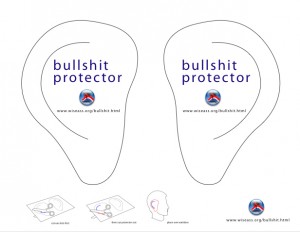 This curt announcement went out last Friday courtesy of the Texas Commission on Environmental Quality:
This curt announcement went out last Friday courtesy of the Texas Commission on Environmental Quality:
The Texas Commission on Environmental Quality (TCEQ) will host a public information meeting to provide information on the development of revisions to the SIP for the 2008 ozone National Ambient Air Quality Standard (NAAQS) in the 10-county Dallas-Fort Worth (DFW) nonattainment area. The meeting will take place on Thursday, September 5, 2013 at 10:00 a.m. at the North Central Texas Council of Governments (NCTCOG), Transportation Council Room, 616 Six Flags Drive, Arlington, Texas 76005. NCTCOG and United States Environmental Protection Agency (EPA) representatives will also provide updates on local and federal initiatives.
What this doesn't say is that the last local clean air plan drafted by Rick Perry's TCEQ failed miserably last summer when DFW actually ended up with worse air than when it had begun in 2010. The state can't even bring itself to admit that. It's never had a successful smog plan in DFW, but only Rick Perry's TCEQ plan actually made the air worse. Maybe that's why they're holding this "public information meeting" at a mid-morning time guaranteed to result in a low rate of participation by actual DFW citizens.
You'd also never guess from this release that DFW has a local advisory board for drafting its own clean air plans. The North Texas Clean Air Steering Committee was constituted specifically for the purposes of working with the state on such plans. It hasn't met in two years. Nor is it likely to meet anytime soon if Rick Perry's TCEQ has its way – the state considers it a nuisance to have to come up here and explain itself to local elected officials and environmentalists.
Did we say environmentalists? Since the 2006-2007 smog plan, citizen groups have held three seats on the Committee to balance out the three seats given the local Chambers of Commerce. Right now those seats are held by Downwiders at Risk, the Sierra Club/Public Citizen and the Environmental Defense Fund. The rest of the slots are filled by local city council members, Mayors, County Commissioners and County Judges.
Downwinder's own Jim Schermbeck is a member and has used the meetings of the Committee to cross-examine Rick Perry's TCEQ officials who otherwise receive a mostly unquestioning welcome everywhere else they go. Committee meetings are the one place that representatives fo citizens groups can ask questions like a legislator in an Austin hearing. And the TCEQ reallly doesn't like that. Especially when we've been right about so many things and the TCEQ so wrong.
It's also true that Rick Perry's TCEQ really doesn't even bother to start any kind of consultation or planning process in DFW until a year before the plan is due. Since a new plan to achieve the new ozons/smog standard of 75 parts per billion doesn't kick in until 2015, it's doubtful the Committee will be called to order before next Spring. That way the pollution control measures needed by any plan have no chance of passing a state legislature at the last moment in 2015, ensuing that no real changes take place and DFW remains smoggy.
Perhaps you think that's way too cynical a perspective. But that's exactly what happened this last cycle in 2010-2011. And it was actually worse, because the biggest part of that last plan was to sit back and watch as DFW residents bought new cars. No moving parts.
Meanwhile, can anyone name a current local elected official who's known for their advocacy of clean air? Dallas Mayor Laura Miller fought Perry's coal plants in 2006. in 2013, her successor, Dallas Mayor Mike Rawlings protects secret deals with gas drillers. Dr./Mayor Cluck in Arlington has voted in favor for dozens, if not hundreds, of gas wells near homes, parks, and day care centers even as he recites his familiar litany about running into childhood asthma victims in the hospital emergency room. Fort Worth? Bought and sold to Chesapeake. Dallas County? They're too busy indiscriminately dropping pesticides on us. Mayor Evans of Plano used to be a voice of reason in Collin County. Now you've got Judge Keith Self who never met an air polluter he didn't liked.
Some stalwarts like Parker County Judge Mark Riley and Tarrant County Judge Glenn Whitley still represent moderate Republican views, but many of their peers have been replaced by Tea Party members who think smog is as imaginary a problem as climate change. We're actually going backwards in our local political engagement of the issue.
If TCEQ is emasculating the local advisory group on clean air, it's certainly getting a valuable assist from a feckless DFW indigenous officialdom, who seemed to have all walked away as a group from clean air as a goal they were willing to strive to achieve.
So mark your calendars for another citizen-friendly TCEQ "public information meeting"….at 10 am on a Thursday morning, September 5th, in Arlginton at North Texas Council of Government headquarters, when most people will be working and unable to attend. For for the sensitive among you, we suggest also attending with some handy BS protectors for your ears so as not to irrevokably damage logic receptors in the brain.
Study: 2 Million Air Pollution Deaths Annually Worldwide, 77,000 in US
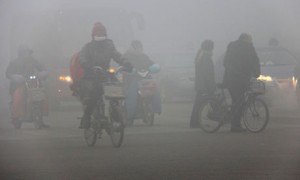 We're a bit behind the curve in reporting on this, but scientists at the University of North Carolina just published a study in "Environmetnal Research Letters" that estimates Particulate Matter and Ozone pollution in the air is responsible for approximately 2.2 million deaths worldwide every year.
We're a bit behind the curve in reporting on this, but scientists at the University of North Carolina just published a study in "Environmetnal Research Letters" that estimates Particulate Matter and Ozone pollution in the air is responsible for approximately 2.2 million deaths worldwide every year.
Long-timers already know about how insidious Particulate Matter can be, but this only chronicles the hardcore fatal respiratory and cardiovascular impacts, concluding the tiny particles of soot cause at least 2.1 million deaths every year while ozone pollution shortens another 500,000 lives.
"East Asia," aka China, accounts for fully have of both those figures. India for another third. In North America, the casualties include 43,000 premature deaths from PM pollution and 33,000 from ozone.
Jason West, co-author of the study said: "Outdoor air pollution is an important problem and among the most important environmental risk factors for health."
Although alarming, these numbers are all underestimates of the health impacts of both of these pollutants, since they exclude anything other than fatalities. Besides making it harder to breathe, PM pollution has been linked to brain disorders and immune system disruptions.
Colorado: Oil and Gas Now the Main Source of Smog-Forming VOCs and Third Largest Source of Nitrogen Oxides
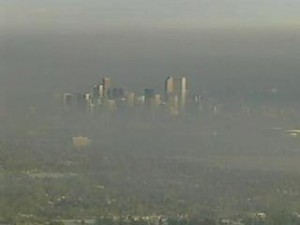 At least 600 tons of air pollution a day caused by the oil and gas industry in Colorado is causing a lot of consternation, especially in the Denver Metro area, which, like DFW, is currently out of compliance with the Clean Air Act for ozone, or smog.
At least 600 tons of air pollution a day caused by the oil and gas industry in Colorado is causing a lot of consternation, especially in the Denver Metro area, which, like DFW, is currently out of compliance with the Clean Air Act for ozone, or smog.
Oil and gas emissions now are the main source of volatile organic compounds in Colorado and the third-largest source of nitrogen oxides, at a time when a nine-county area around metro Denver is already failing to meet federal clean-air standards, state data show.
Can Obama’s EPA Save Us From TCEQ’s “Clean Air Plans”?
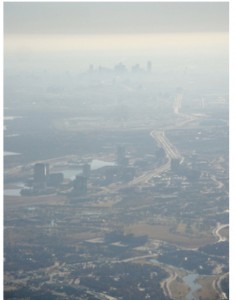 It's only a proposal, but the Obama Administration's plan to cut sulfur in gasoline is aimed primarily at drastically reducing smog-forming Nitrogen Oxide, Volatile Organic compounds and Particulate Matter, the major pollutants that causes DFW to have such bad "ozone seasons." Would it reduce it enough to finally put the region in compliance with the Clean Air Act? Good question.
It's only a proposal, but the Obama Administration's plan to cut sulfur in gasoline is aimed primarily at drastically reducing smog-forming Nitrogen Oxide, Volatile Organic compounds and Particulate Matter, the major pollutants that causes DFW to have such bad "ozone seasons." Would it reduce it enough to finally put the region in compliance with the Clean Air Act? Good question.
Sulfur content in gasoline would drop from the current standard of 30 ppm to 10 ppm by 2017 – one year before the compliance deadline for the tougher 75 parts per billion national ambient air ozone standard. That's not a coincidence. The EPA hopes that this initiative is going to drive urban ozone clean-up throughout the country, even in stubborn dirty air hot spots like DFW, which hasn't been in compliance with a smog standard since it was created over 20 years ago.
Along with new stricter emission standards for cars that have already been implemented, the pollution from cars will be coming down over the next decade to historic-per-vehicle lows. Since forever, the state of Texas and local officials have put almost all the blame for DFW's poor air quality on cars. So does this mean that we might actually have a chance to breathe safe and cleaner air, by say, 2020?
Maybe.
First, there's the question of continued growth. If per-car emissions go down, but you're importing 120,000 more cars every year into North Texas, the decreases in emissions are being canceled out to some degree. In this respect, DFW has been its own worst clean air enemy. By attracting new residents year after year and, for the most part, not creating successful transportation options other than private vehicles, the Metromess dooms itself to more total car pollution.
Then there's the climate. Everyone knows how unbearably hot it can get in DFW during July, August and September. That heat and sunlight is one reason we have a smog problem – it chemically transforms the Nitrogen Oxides (NOx) and Volatile Organic Compounds (VOCs) into ozone. What if it gets hotter, and drier? When the ground can't cool off at night and you start out with high morning temperatures that will only get worse by 5 pm, you know it's going to be a bad air day. The more days like that, the harder it's going to be to have safe and legal air despite the changes in engine design and fuel specs. So climate change could rob us of some of those automobile reductions.
If the last couple of years are any indication, you also have to wonder how much of those vehicle changes will be lost on DFW because we live in the Barnett Shale. 16,000 gas wells that are relatively short-term air polluters are being supplemented with more processing infrastructure like compressors, refineries, and pipelines that are year round polluters. Last year's Houston Advanced Research Consortium study estimated the impact of even a single compressor or flare to be as much as 3-10 ppm within five to ten miles, something it would take thousands of cars to accomplish. Even if those cars aren't there anymore, or their emissions make them less of a clean air threat, you have these decentralized major sources taking up the slack. This is one reason why the state itself told EPA that last year there was more VOC air pollution coming from oil an gas sources in North Texas than all the area's on-road cars and trucks, and a large contributing cause to why air quality has been getting worse in DFW over the last two years.
It's not just the number of these facilities but their physical location as well. The more the gas industry moves eastward, the more of the DFW core urban area is "downwind" of these sources, the more the pollution from these facilities combines with car emissions and other urban sources, and the longer they take to leave the now 10-county "non-attainment area," meaning they linger, exposed to sunlight and heat, and have more opportunity to create high levels of ozone. If you have more flares and compressors within 1 to 3 miles of one of 18 or so state air monitors – you will probably begin to see higher ozone readings as a result of their operation – as you have the last couple of years. Most of these pipelines and processing facilities have come online only since 2006.
And that's just in the North Texas area. There's evidence to suggest that the gas industry's building-out to the southeast – or upwind – of DFW is also affecting our air quality. In the same way that Houston's air pollution is said to make our initial "background" ozone levels higher, so too the 60-100 compressors in Freestone County, about 90 miles southeast of Dallas also feed their under-regulated "Standard Permit" pollution into the DFW urban mix. As does the Haynesville Shale gas play itself, as do the remaining east and central Texas coal plants and so forth. If sources to the south and east continue to increase their emissions, it means DFW starts from further and further behind, so that even if cars get cleaner, they might not get so clean so fast as to compensate for this imbalance.
Then there's the "fire hose" effect of the three Midlothian cement plants sitting so close to one another as to create one large super plume that's usually pointed toward the DFW urban core most of "ozone season." Because of citizen efforts, those cement kilns are substantially cleaner in 2013 than they were as recently as 2008. All but one wet kiln is closed, and that one is due to shut down next year. None are burning hazardous waste. But they're still the largest stationary sources of pollution in North Texas – including emitting copious amounts of NOx and VOCs – and they can still impact monitor readings miles and miles away. It's unclear what impact the burning of newly-permitted "non-hazardous" industrial wastes like car parts and plastics in the Midlothian kilns will have on the formation of smog-forming pollution.
EPA estimates an 80% drop in VOC and NOX pollution from cars as a result of its new low-sulfur fuel rule. That's steep. Remove that amount of pollution from all DFW's cars and trucks, and you'd expect to see a substantial improvement in air quality. That's what you'd expect. But, depending on a lot of other variables the state and federal government may or may not be interested in fixing, it could take more than this proposal to bring DFW into compliance with the new 75 ppb ozone standard that is now the federal definition of safe and legal air.
Dallas Park Driller Was Former Haz-Waste Handler Forced to Shutter California Plant for Violations
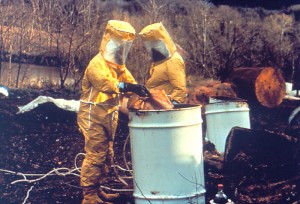 The President of the company at the center of the current Dallas drilling controversy was Vice-President and General Counsel of a hazardous waste disposal firm that was forced to close its California plant site after a long history of environmental violations.
The President of the company at the center of the current Dallas drilling controversy was Vice-President and General Counsel of a hazardous waste disposal firm that was forced to close its California plant site after a long history of environmental violations.
Thomas Blanton is President of Keystone, the parent company of Trinity East, which is applying to the City of Dallas for three gas drilling and production permits in the Trinity River flood plain near Irving. But in the 1990’s and early years of this century, he was a leading officer of the Board of Directors of US Liquids, a large broker of hazardous wastes that had its California facility ordered shut by the state’s California Department of Toxic Substances Control.
From 1999 to 2003, US Liquids owned Romic Environmental Technologies Corporation. Romic’s Bay Area operation received hazardous wastes from throughout the country, “blended” them on-site, and then shipped the toxic soup for use as “fuel” for cement plants like the TXI kilns in Midlothian.
Records show that from 1999 to 2004, Romic was slapped with 28 separate environmental violations by the State of California, which resulted in penalties of $849,500. The California Occupational Safety and Health Administration (CalOSHA), discovered 57 violations at the plant from 1988 to 2004, totaling another $163,360 in fines.
Romic closed in 2007 on orders from the state of California as part of a legal settlement stemming from a series of environmental violations. The state and EPA ordered a clean up and closure of the facility after extensive soil and ground water contamination was discovered over most of the site. According to the EPA, the contamination is primarily attributed to the spills, overflows, flooding events, and other accidental releases around the “central process area.” The primary contaminants were volatile organic compounds such as trichloroethene (TCE), a solvent used to clean metal parts. Toxins migrated as much as 80 feet below ground that borders San Francisco Bay tidal marshes.
All three sites that Blanton’s company wants to drill on are located in the Trinity River’s 100-year flood plain; two are also on City of Dallas park land. Opponents have warned about probable contamination from surface spills, which a 2011 UT study concluded were more frequent with fracking than conventional drilling.
It was recently disclosed that a Trinity East sister company experienced a casing failure at an Irving gas well it tried to drill in 2009, although the extent of any environmental damage caused by the incident remains unknown.
“Does Dallas really want hand over its park land to a businessman who has a history of contaminating and threatening soil and water resources?” asked Gary Stuard, Chair of Downwinders at Risk, a local DFW clean air group that’s been battling the Trinity East permits.
After denying Trinity East’s permits once last December, the City Plan Commission is scheduled to vote a second time on them at its meeting on Thursday afternoon.
Stuard was critical of the lack of due diligence city staff had performed on Trinity East and its owners and said this new information was another example of residents doing the job themselves. “There’s never been a review of the company’s track record by the City. It had gone completely unexamined until Dallas residents took it upon themselves to do the research. What else don’t we know because the City isn’t doing a routine background check?”
Back in California, the first phase of the EPA-ordered clean-up at the Romic site ended in 2010 with clean-up of surface and above ground messes. A second phase is addressing the remediation of below surface soil and groundwater contamination. The estimated cost for closure and cleanup of the facility is $2.5 million.
Study: Gas Drilling Cause of Wintertime Smog in Utah Basin
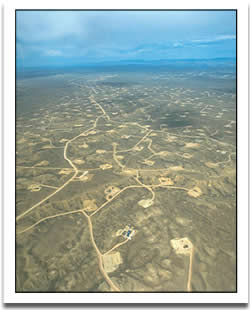 98 to 99 percent of the Volatile Organic Compounds (VOCs) and 57 to 61 percent of the Nitrogen Oxide (NOx) found in Utah's Uninta's Basin are emitted by gas drilling or production sources, and are responsible for worsening smog there, according to a new Utah Department of Environmental Quality study of air quality there.
98 to 99 percent of the Volatile Organic Compounds (VOCs) and 57 to 61 percent of the Nitrogen Oxide (NOx) found in Utah's Uninta's Basin are emitted by gas drilling or production sources, and are responsible for worsening smog there, according to a new Utah Department of Environmental Quality study of air quality there.
The Basin is one of several large rural Western areas of the country that also includes stretches of Colorado and Wyoming where gas drilling has caused the phenomena of "wintertime ozone," creating smog as bad or worse than Los Anageles or Houston.
Despite low snowfall this year, the Basin has still seen more than a dozen episodes of high ozone so far. The ozone readings can reach nearly twice the limit considered safe by the EPA and last for weeks at a time. In 2011, levels reached 139 parts per billion, nearly double the federal health standard. About 1,100 wells were drilled that year.
Leaks from pipes and tanks and fumes from pumps, dryers and compressors were major sources of volatile organics. Drill rigs and fracking were sources of nitrogen oxides and methane, according to the study.
While making no recommendations,the report did say that reductions in certain kinds of volatile organic compounds, including benzene and toluene, “could be particularly effective since they are not only a direct health concern but are more active in ozone production than many other” VOCs.
Guess What? That “Drilling” Permit is Really for a Refinery
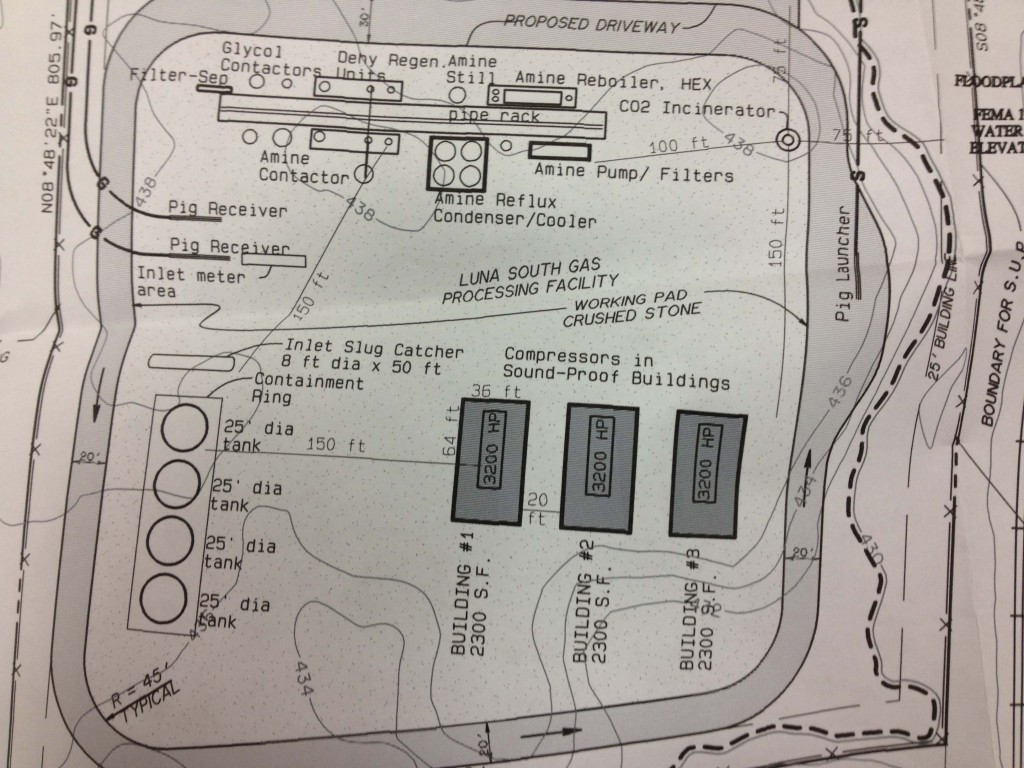 Under the guise of "gas drilling," Dallas City Hall and industry are pressing for approval of a permit that would locate a gas refinery only 600 feet from the new Elm Fork soccer complex, and immediately give birth to one of the ten largest air polluters in the City of Dallas, as well as one of its most toxic.
Under the guise of "gas drilling," Dallas City Hall and industry are pressing for approval of a permit that would locate a gas refinery only 600 feet from the new Elm Fork soccer complex, and immediately give birth to one of the ten largest air polluters in the City of Dallas, as well as one of its most toxic.
"There's a huge toxic Trojan Horse hiding in what the City and Trinity East describe as just a gas drilling permit," charged clean air activist Jim Schermbeck of Downwinders at Risk. "In fact, the Elm Fork permit allows for the building of a gas refinery that houses at least three giant compressors as well as an entire acid gas removal unit that strips off hydrogen sulfide, one of the most dangerous substances in the gas patch."
A motion to "reconsider" the Dallas City Plan Commission's 7-5 December 20th rejection of the Elm Fork permit and two other Trinity East gas sites is being advocated by CPC Chair and Mayoral appointee Joe Alcantar at this Thursday's meeting. If successful, the "reconsideration" would require the CPC to hold a second hearing and re-vote on the permits less than a month after denying them.
Opponents say the move is an act of desperation on the part of the Mayor and City Manager to protect a secret deal that was made between the City and Trinity East when the company first paid for mineral rights leases on city owned land. In interviews, the Mayor himself has said that a "deal was cut." Residents say the public was left out of that deal.
But after making calls to City Hall, Schermbeck is convinced that no one in Dallas city government is aware that the "gas drilling permit" being proposed by Trinity East is actually a permit to build a large gas refinery in the Trinity River floodplains.
"They're in way over their heads. City attorneys are still describing this as a drilling permit, but that's not what takes up most of the acreage on this site – it's all about the refinery."
During the December 20th City Plan Commission hearing on the permit, Trinity East representatives stated that the three proposed compressors alone – huge locomotive sized diesel-powered engines that produce thousands of horsepower in order to move gas through pipelines – would release 25 tons of air pollution each every year for an annual total of 75 tons.
That number would immediately place the facility among the city's ten largest air polluters according to the latest state emission totals from 2010. It would join power plants, asphalt and roofing materials manufacturers, and chemical plants as one of the city's biggest "stationary sources" of pollution.
However, Schermbeck thinks Trinity is low-balling their total air pollution impacts by not including other on-site refinery sources like its battery of storage tanks and "acid gas removal" operation that's designed to strip dangerous hydrogen sulfide off of natural gas streams through a series of acid baths and heat.
Hydrogen Sulfide is a harmful and toxic compound. It is a colorless, flammable gas that can be identified by its "rotten egg" odor. This invisible gas is heavier than air, travels easily along the ground, and builds up in low-lying, confined, and poorly ventilated areas. It acts as a chemical asphyxiant through inhalation exposure and its effects are similar to cyanide and carbon monoxide, which prevent the use of oxygen.
The equipment to strip off Hydrogen Sulfide from raw gas is large, complicated and dangerous. Site plans show a 200 foot long "pipe rack" with at least 20 "point sources" or stacks, apart from the compressors, where pollution could be released into the atmosphere.
"This isn’t a facility you want near parks or kids," said Schermbeck. "Yet, the City of Dallas seeks to put it just 600 feet away from its new huge soccer complex that’s meant to attract thousands of kids for hours every week."
Such a gas facility also challenges regional smog goals. A 2012 study from the Houston Advanced Research Center found that "routine emissions from a single gas compressor station can raise ozone levels by 3 parts per billion (ppb) as far as five miles downwind, and sometimes by 10 ppb or more as far as 10 miles downwind."
The Trinity East numbers don't reflect the release of greenhouse gas pollution either, which could be enormous from a facility the size of the refinery being proposed. Gas processing plants can release 20 to 80,000 tons of greenhouse gases a year. By comparison, the entire inventory of greenhouse pollution from all Dallas industrial sources in 2005 was 25,000 tons a year.
None of this information was brought up at the December 20th CPC hearing on the Elm Fork permit because the permit request in its current form was only a couple of weeks old when it went to the CPC and the compressors were a last-minute addition to an older, pending request.
Citizens were lucky to get a crowd to even show up five days prior to Christmas, and Schermbeck believes no one at Dallas City Hall bothered to notice that one of the so-called drilling permits was a refinery permit.
"Because it had no expertise of its own, and it was ignoring citizens, City Hall was completely reliant on the company's version of what the permit was for, and Trinity East probably didn't want to admit they were stuffing one kind of permit inside of another. The City didn't perform its due diligence. The result is that it's been completely played by the company."
Schermbeck recounted that he could find no one at City Hall who had any idea of how Trinity East arrived at their "25 tons a year" air pollution figure, knew what kind of specific pollutants that tonnage included, or, most importantly, thought it would be good to know this information before the city handed the company a permit to operate an inner-city gas refinery.
"Mayor Rawlings and the City Manager seem content to give Trinity East a blank check to pollute Dallas air," he said.
A closer look at the refinery site plans also reveals equipment that is fundamentally at odds with the way Trinity East and the gas industry has been portraying what kind of gas Dallas has underneath it.
Up to now, gas operators have been saying Dallas gas is "dry" and without a lot of extra hydrocarbons found in "wet gas" further west. But the acid gas removal units and Glycol conductors proposed for the Elm Fork refinery are built for wet gas.
Schermbeck suggests that perhaps either the City has been mislead about the nature of the gas it owns or the nature of the Trinity East site. He theorized that instead of the Dallas refinery being built for dry Dallas gas, it might be aimed at wet gas coming from the west.
"Dallas would get none of the royalties, but all of the pollution."
Mad? Go to this link now and send an e-mail to the Dallas City Council and City Plan Commission that says you oppose these gas permits and the "reconsideration" of their denial by the Commission:
https://www.downwindersatrisk.org/featured-citizen-action
Do it Now.
“Animals are the Sentinels”
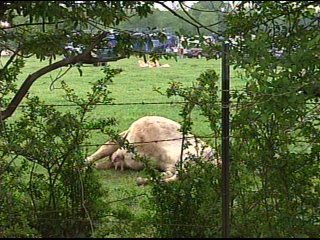 In the late 1980's Sue Pope became concerned about her horses and cows. Her favorite Arabian was developing "heave" muscles on its torso that Pope's vet said was the result of the horse straining to breathe. Her cattle were acting strangely and not developing as they should. These problems seem to come out of the blue, for no obvious reason Pope could figure out. She also noticed that she and her family didn't feel the same either and wondered if what was affecting her animals was also affecting them. She spoke with her neighbors, some of whom were also noticing strange things among their stock and themselves. They didn't have any answers either. That's when Pope started to look for causes outside the gate of her small Midlothain ranch.
In the late 1980's Sue Pope became concerned about her horses and cows. Her favorite Arabian was developing "heave" muscles on its torso that Pope's vet said was the result of the horse straining to breathe. Her cattle were acting strangely and not developing as they should. These problems seem to come out of the blue, for no obvious reason Pope could figure out. She also noticed that she and her family didn't feel the same either and wondered if what was affecting her animals was also affecting them. She spoke with her neighbors, some of whom were also noticing strange things among their stock and themselves. They didn't have any answers either. That's when Pope started to look for causes outside the gate of her small Midlothain ranch.
And that was the beginning of what eventually turned into Downwinders at Risk. Because of her own experience it has been Sue Pope's belief that more than expensive monitors or dubious risk assessment studies, "animals are the sentinels" for human health. They are literally the canary furtherest down the coal mine.
When the ATSDR decided to review the monitoring information from Midlothain for it's "health consultation" beginning almost ten years ago, they were in part drawn by the large file of documented cases of animals illness, disease and deformities. There's more than one animal stock breeder who has moved to Midlothian over the last 25 years expecting that elusive "fresh country air" to benefit their animals only to find them suffering weird symptons never experienced before in previous locations.
Animals are sentinels, especially livestock, because they don't go to school or work, but stay in the same place all day and night, they graze exclusivley on local plants grown in the local soil. They drink the local surface and/or well water. Livestock have the most exposure and the most "exposure pathways" to whatever potentially harmful chemicals might be in the environment. If it's harming the animals, it's probaly harming people as well.
That's the context for a new article out in The Nation about animals gettign sick in the gas patch.
"Earlier this year, Michelle Bamberger, an Ithaca veterinarian, and Robert Oswald, a professor of molecular medicine at Cornell’s College of Veterinary Medicine, published the first (and, so far, only) peer-reviewed report to suggest a link between fracking and illness in food animals. The authors compiled case studies of twenty-four farmers in six shale-gas states whose livestock experienced neurological, reproductive and acute gastrointestinal problems. Exposed either accidentally or incidentally to fracking chemicals in the water or air, scores of animals have died. The death toll is insignificant when measured against the nation’s livestock population (some 97 million beef cattle go to market each year), but environmental advocates believe these animals constitute an early warning.
Exposed animals “are making their way into the food system, and it’s very worrisome to us,” Bamberger says. “They live in areas that have tested positive for air, water and soil contamination. Some of these chemicals could appear in milk and meat products made from these animals.”
In Louisiana, seventeen cows died after an hour’s exposure to spilled fracking fluid. (Most likely cause of death: respiratory failure.) In north central Pennsylvania, 140 cattle were exposed to fracking wastewater when an impoundment was breached. Approximately seventy cows died; the remainder produced eleven calves, of which only three survived. In western Pennsylvania, an overflowing waste pit sent fracking chemicals into a pond and a pasture where pregnant cows grazed: half their calves were born dead. The following year’s animal births were sexually skewed, with ten females and two males, instead of the usual 50-50 or 60-40 split.
In addition to the cases documented by Bamberger, hair testing of sick cattle that grazed around well pads in New Mexico found petroleum residues in fifty-four of fifty-six animals. In North Dakota, wind-borne fly ash, which is used to solidify the waste from drilling holes and contains heavy metals, settled over a farm: one cow, which either inhaled or ingested the caustic dust, died, and a stock pond was contaminated with arsenic at double the accepted level for drinking water."
People used to ask Downwinders why we decided to take on air pollution from the gas industry. The reason is that all of the red flags we saw over the years in Midlothian are also being raised around gas facilities – individually and/or collectlively. Many of the same chemicals, many of the same health effects from those chemicals, and then the warning from the animals.
Better than TCEQ monitors. Better than out-of-date risk assessments. Animals are some of the best Guinea Pigs we have in the laboratory of chemicals we all swim in. If we would only listen.

